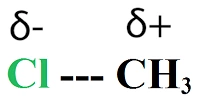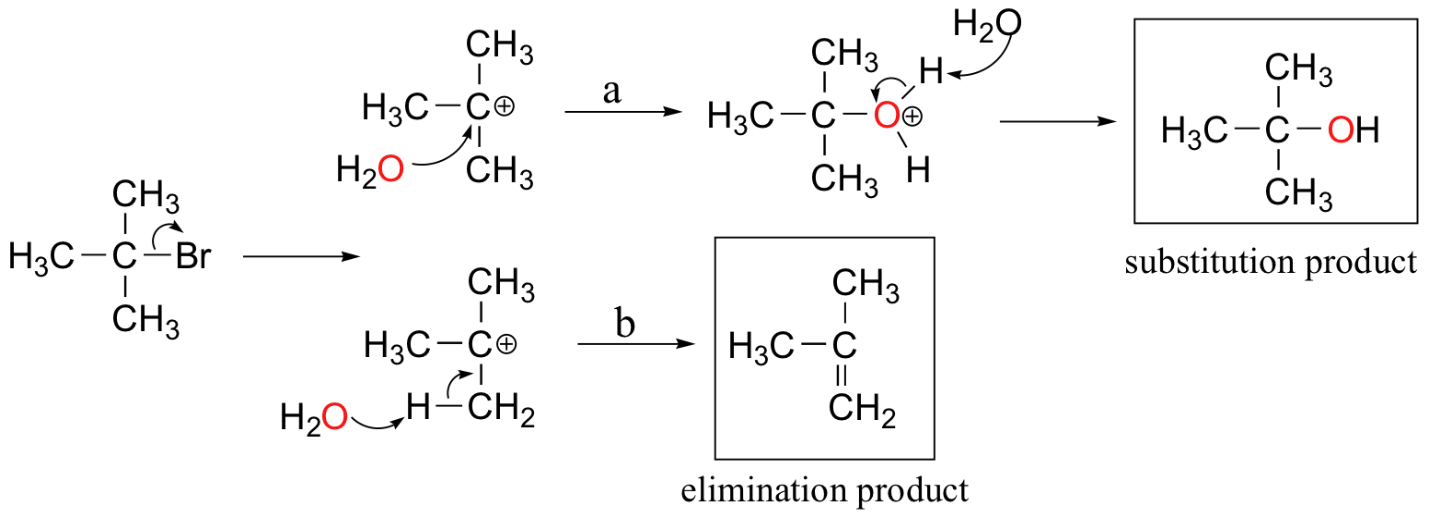Characteristics
Characteristics of unimolecular nucleophilic substitution
In this article, we will learn about nucleophiles, substitution reaction, nucleophilic substitution reactions, and their characteristics.
Definition of Nucleophiles
Nucleophiles mean “nucleus loving”, these are the ions or molecules that are strongly attached to the area of a positive charge. A nucleophile has a negative charge. These are said to be completely energised or have negative ions present on a molecule. Since they donate electrons, therefore by definition, they are referred to as Lewis bases. The basic examples of nucleophiles are halogen ions, water, hydroxide ions, and cyanide ions.
What is Nucleophilic substitution reaction?
In the organic chemistry, nucleophilic substitution reactions are a class of reactions in which an electron-rich nucleophile binds to positively charged ions to replace a leaving group.
Nucleophilic substitution reactions are those where a nucleophile replaces a group in a particle. Nucleophilic substitution reactions are useful in achieving carbon-carbon bond as well as a bond among carbon and a heteroatom. An assortment of substrates like halides, alcohols, esters can experience substitution reactions. While the reaction result would include a substitution, notwithstanding, contingent upon the reaction conditions, the mechanism would be unique.
A general nucleophilic reaction substitution reaction can be represented as
R-X + Nu- à R-Nu + X, where R-X is an alkyl halide, and Nu represents a nucleophile.
A substrate experiencing a nucleophilic substitution reaction will have a carbon bonded to a heteroatom. The heteroatom X is named as a leaving group. Presence of the heteroatom, which is typically more electronegative than carbon, renders the carbon to which it is appended electron lacking or electrophilic. In the above condition, as the nucleophile is adversely charged, the leaving group also departs with its pair of electrons as an adversely charged species.
Mechanism of Nucleophilic substitution reaction:
There are two mechanisms of nucleophilic substitution reaction.
SN1 reaction and the SN2 reaction, where S denotes substitution reaction, N denotes nucleophilic, and the number denotes the order of a reaction.
What is Haloalkane?
Haloalkanes (alkyl halides) are molecules of carbon that are bound to a halogen (F, Br, Cl, or I). The carbon is less electronegative than the halogen, so it gives a partial positive charge to the carbon atom. Halogen having a partial negative charge implies that the carbon atom of the haloalkane is susceptible for a nucleophile attack.

The chlorine possesses a partial negative charge, while the carbon of the alkyl halide has a partial positive charge.
Alkyl halides are classified based on the adjacent carbon.
- primary alkyl halide - halogen is attached to a carbon with two hydrogens
- secondary alkyl halide - halogen is attached to a carbon with one hydrogen
- tertiary alkyl halide - halogen is attached to a carbon with no hydrogens
Haloalkanes are changed over into alcohols using hydroxide particle in aqueous media through SN1 and SN2 Reactions. Alcohols can effectively be synthesised by substitution of haloalkanes and sulfonic esters with leaving groups. The selection of reagents and reaction conditions for the hydrolysis is significant because elimination reactions are possible, especially at high temperatures resulting in alkenes.
Haloalkanes hydrolysis is contingent upon the structure of the haloalkanes. The primary haloalkanes regularly experience SN2 reactions, whereas tertiary haloalkanes react an SN1 mechanism for tertiary haloalkanes (tertiary alkyl halides).
Related Videos:
- Structures of different dihalogen derivatives of propane
- Ambident nucleophiles with example
- Give the uses of freon 12, DDT, carbon tetrachloride and iodoform
- Why is sulphuric acid not used during the reaction of alcohols with KI?
There are two types of reactions of haloalkanes, including SN1 And SN2 Reaction.
SN1 Reaction
The SN1 reaction is a unimolecular substitution nucleophilic reaction. This reaction involves two-steps; in the first step, the carbon-halogen bond breaks heterolytically with the halogen holding the previously shared pair of electrons. In the second step, the nucleophile reacts quickly with the carbocation that was formed in the first step.
This substitution reaction is done in polar protic solvents such as water, liquor, acidic acid and so on. This reaction follows first-order chemical kinetics. The two steps of SN1 are described underneath.
Step-1:
The chemical bond between carbon and halogen breaks due to a nucleophile attack, and it leads to the formation of a carbocation. The bond is dissociated by solvation of the compound in a protic solvent, thus this step is slowest of all. The rate of reaction is dependent on haloalkane, not on nucleophile.
Step-2:
The nucleophile attacks the carbocation formed in step 1, and the new compound is formed. Since, the rate-determining step of the reaction is the formation of a carbocation, consequently more prominent the stability of formation of a moderate carbocation, more is the ease of the compound experiencing substitution nucleophilic unimolecular or SN1 reaction. On account of alkyl halides, tertiary alkyl halides experience SN1 reaction extremely fast because of the high stability of tertiary carbocations. Subsequently, allylic and benzylic halides show high reactivity towards the SN1 reaction.
Effect of Good leaving Group on SN1 Reaction
An SN1 reaction rate reaction increases with a good leaving group. This is because the leaving group is associated with the rate-determining step. A leaving group wants to escape, so it breaks the C-Leaving Group bond faster. The bond dissociation leads to the formation of the carbocation, and the rate of the formation of the carbocation is directly proportional to rate of the nucleophile charging in, and consequently, the reaction will be finished in a faster rate with a faster carbocation formation rate.
A good leaving group is a weak base because weak bases can withhold the charge. They leave with the two electrons and all together for the leaving group to leave, it needs to have the option to acknowledge electrons. Strong bases, then again, give electrons which is the reason they can't be good leaving groups. On moving from left to right on the periodic table, electron-donating capacity decreases and thus capacity to be a good leaving group increases. Halides are a case of a good leaving group whos leaving-group capacity increases as you go down the group.
Possibility of elimination reaction in SN1
In the entirety of our discussion so far about nucleophilic substitutions, we have overlooked another significant possibility. Substitution reactions rival a kind of reaction known as elimination. Consider, for instance, the two ways that a reaction can occur when 2-bromo-2-methylpropane combinms with water.

It starts with the carbocation intermediate formation of. In the reaction pathway ‘a’, water molecule behaves as a nucleophile. However, a water molecule combining with the carbocation intermediate could lead to water molecule acting as a base instead of a nucleophile, removing a proton from one of the methyl carbons and resulting in the formation of a new carbon-carbon pi bond. This second pathway is referred to as an elimination reaction.
Important Chapters:
Definition of Nucleophiles


Similar Questions
Knowledge Check
Characteristic of hydrophytes is
APoorly developed rootsBWell developed rootsCWell developed xylemDStem with sclerenchyma.Characteristic of melosis is
ATwo nuclear and two chromosome divisionsBTwo nuclear and one chromosome divisionCOne nuclear and two chromosome divisionsDOne nuclear and one chromosome divisionCharacteristic is not of infancy.
ARapidity in physical developmentBDependency on othersCFull of moralityDRapidity in mental activities
Characteristic of ciliata are
View SolutionCharacteristic of birds is :-
View SolutionCharacteristic of metanephric kidney is
View Solutionwhich of the followings is not a characteristic of a characteristic of a covalent compound ?
View SolutionThe characteristic of the target element that determines the frequency of characteristic X-rays, is
View Solution
